#ancient helix fossil
Explore tagged Tumblr posts
Text

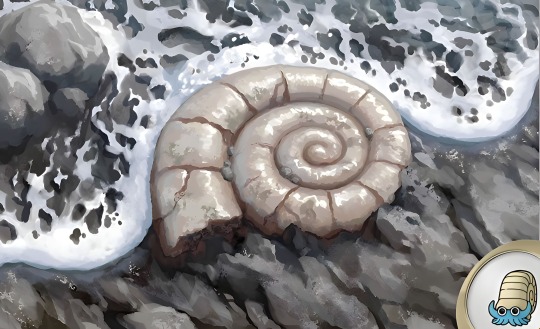
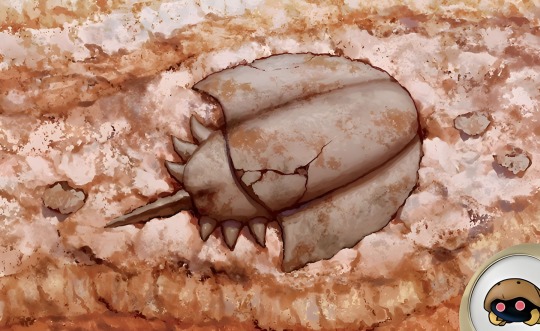
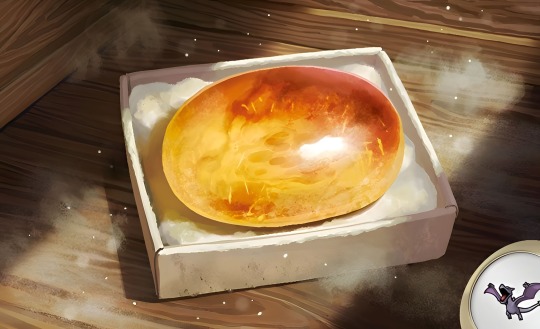
Some AMAZING Pokémon Fossil illustrations by AYUMI ODASHIMA ❤️
#pokémon#official art#card art#pokémon trading card game#tcg#AYUMI ODASHIMA#fossil pokemon#Pokémon fossil#omanyte#kabuto#aerodactyl#unidentified fossil#ancient dome fossil#ancient helix fossil#ancient Old Amber#silver tempest#pokemon#pokémon 151#151
129 notes
·
View notes
Photo


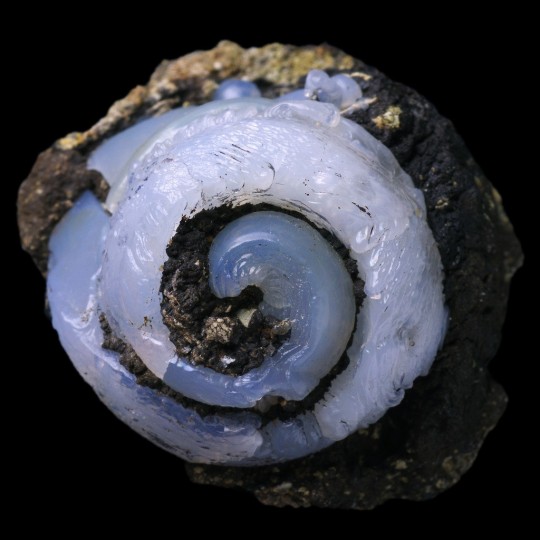
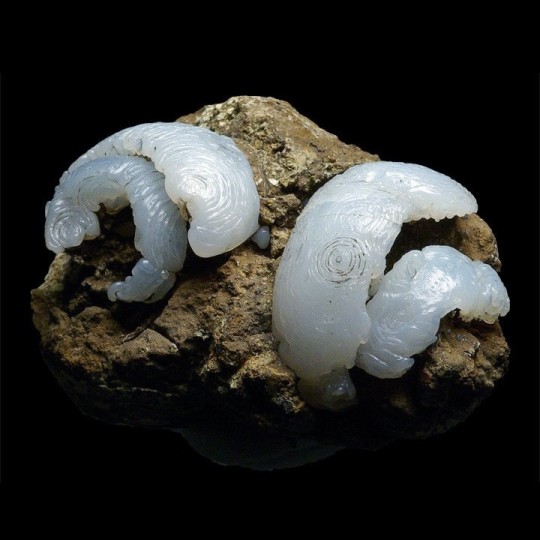
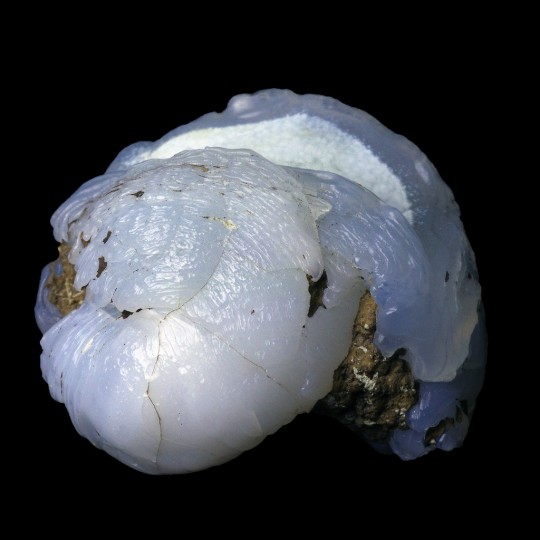
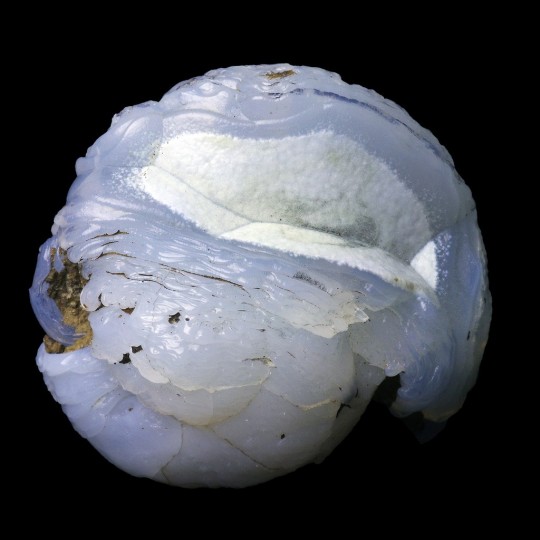
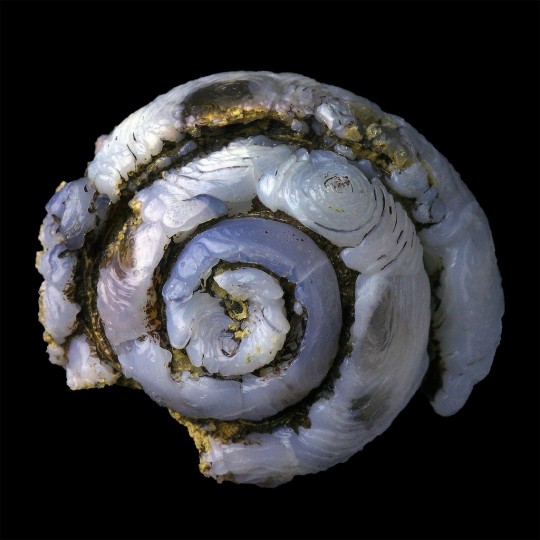
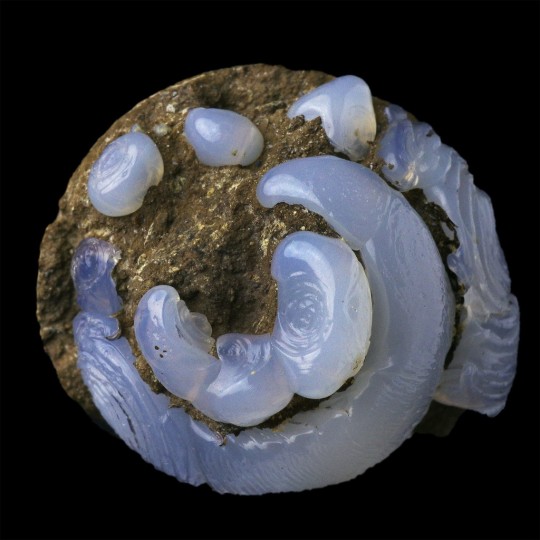


Epigenised (Opal-CT, Lussatite) Helix Ramondi snail fossil, from Dallet, Puy-De-Dôme, France.
#opal-ct#lussatite#epigenised#epigenized#snail#snails#helix ramondi#gastropod#gastropods#animal#animals#fossil#fossils#fossilised#fossilized#ancient#dallet#puy-de-dôme#puy-de-dome#france
14K notes
·
View notes
Text
I was struck by how the entity’s growths formed in a spiral pattern, almost like a double helix you’d find in a strand of DNA. Oil is made from the fossilized remains of ancient plants and animals. It’s a sort of geological memory, just like how DNA is an evolutionary memory that allows the body to build and rebuild itself. And the primary thing that it affects when it touches people is their memories, whether random flashes of nostalgic images or deeply personally significant memories.
Going off of the DNA analogy…I don’t think the entity held any malice towards the crew. I don’t think it could hold malice to begin with, or goodwill, or any other more complex emotion. DNA is a chain of chemicals, and we have no conscious control over its transcription. The only thing it “wants,” as far as a chain of chemicals wants something, is to stay alive and to replicate itself. Its connection to oil also makes it feel like whatever dead, fossilized organic matter was trapped beneath the surface of the earth very mindlessly trying to return to life. The assimilated crewmates looked like cancerous lumps, growing out of control and endlessly dividing, not out of ill will, but because the cellular mechanism for growth had broken and was replicating out of control, only writ large, across the body of a whole person. The growths, like DNA writ large, a strand of chemicals trying to reassemble itself from whatever chemical matter from the rig and the crew it could use.
There’s a strange “humanity” to the entity, too, though in a very primal, instinctual sort of way. It wanted to be one with the rig and everyone on it, and it kept dredging up memories where Caz and the others felt especially close to their loved ones, even if they weren’t always happy ones. Caz, too, wanted to be one with his family again, but had that dream dashed by a selfish, individualist action. He wanted to keep his fellow crewmates together, and was increasingly devastated as assimilation or death cut them off from each other. The ending was beautiful, and felt like a barely comprehensible sort of kindness despite everything that had led up to it. For a moment, it felt like Caz reached an understanding with the force that had consumed him and that he in turn had destroyed, at least enough to forgive it and let go. In exchange, he got to relive the last time he and his wife were truly together, the morning he left for the rig. And then, over the empty ocean, we hear Suze’s tearful plea to Caz to come home, to reconnect with her, to be part of their family again. The letter felt like a summation of what Suze, Caz, and the entity itself wanted—to return home, to connect with others, to feel “whole” again.
759 notes
·
View notes
Note
Are many resurrected pokémon rock-type as a result of the cloning process being from fossils, or is it just that rock-types fossilize more easily on account of already being made of rock?
It's been a hot topic these past few decades, ever since the first Omanyte was hatched in a hundred million years. The only species I know of a certain verdict on is Aerodactyl, given that it was cloned from a preserved blood sample, but is still rock.
Hmmm. I wouldn't be 100% sure on this one because I'm not a scientist, but from what I've been told, it's a bit of both.
A lot of the pokemon brought back through this process had so much rock and mineral in their remains that it was heavily ingrained into their DNA, however a large majority of these pokemon had properties of rock or ground types which made it easier for their fossils to remain more preserved.
For example, the Helix fossil is mostly preserved through that tough shell, or the Skull Fossil having one of the thickest skull bones known to us, so those pieces were able to last for so long, similar to rock types now with incredibly durable bones.
Some pokemon might have more in common with plants or Avians but the fossilized remains have been mixed in with the rocks and minerals for so long that they wouldn't be able to revive them without the rock typing.
Even though we can revive some pokemon with this method, there's still so much we don't know about the ancient pokemon we revive, so who's to say just how drastically different we got it.

#ranger rai#pokemon ranger#the ranger base#pokemon#ask me anything#ask me a question#fossil pokemon#its a cool concept#i just wish i had more time to study it
9 notes
·
View notes
Note
I'm interested in learning about the regional forms!
Of course! I'll talk about my personal favorites, Axisian Omanyte and Axisian Omastar.


These little guys are psychic and rock type. This form is what happens when you revive a special opalized Helix fossil.(though I've heard of wild sightings on ancient island). They can get kinda......... spaced out. Lovable guys, but they can be off-putting to inexperienced trainers. With their magic guard ability, they can be a valuable addition to any team. They are also used by Winton, our Rock type gym leader.
5 notes
·
View notes
Text

Omanyte the Spiral pokemon a rock and water type
1ft 4inc
16.5lbs
Ability: Shell Armor or Swift Swim Hidden Ability: Weak Armor
Egg Group: Water 1 and Water 3
Highest Base Stat: Defense:100
Lowest Base Stat: Hp Speed:35
Base Stat Total: 355
Favorite Spot: Arms
Least Favorite: Mouth Tendrils
Omanyte lived in the seas of antiquity. Its fossils have been found bearing bite marks from Archeops, so apparently Archeops preyed on it. It was restored from an ancient fossil. Those Helix Fossils are excavated from areas that were once oceans long, long ago.

At level 40 it evolves into Omastar the Spiral pokemon a rock and water type
3ft 3inc
77.2lbs
Ability: Swift Swim or Shell Armor Hidden Ability: Weak Armor
Egg Group: Water 1 and Water 3
Highest Base Stat: Defense:125
Lowest Base Stat: Speed:55
Base Stat Total: 495
Favorite Spot: Biggest Arms
Least Favorite: Mouth
Its heavy shell is thought to be the reason this ancient Pokémon died out. It's apparently a distant ancestor of Octillery. It wraps its prey in its tentacles to immobilize them and then finishes them off with its sharp fangs.
0 notes
Text
By Orlando Mayorquin
At a time when the mighty woolly mammoth roamed the Earth, some 46,000 years ago, a minuscule pair of roundworms became encased in the Siberian permafrost.
Millennia later, the worms, thawed out of the ice, would wriggle again, and demonstrate to scientists that life could be paused — almost indefinitely.
The discovery, published this week in the peer-reviewed journal PLOS Genetics, offers new insight into how the worms, also known as nematodes, can survive in extreme conditions for extraordinarily long periods of time, in this case tens of thousands of years.
In 2018, Anastasia Shatilovich, a scientist from the Institute of Physicochemical and Biological Problems in Soil Science RAS in Russia, thawed two female worms from a fossilized burrow dug by gophers in the Arctic.
The worms, which were buried approximately 130 feet in the permafrost, were revived simply by putting them in water, according to a news release from the Max Planck Institute of Molecular Cell Biology and Genetics in Germany.
Called Panagrolaimus kolymaensis, after the Kolyma River in Russia, where they were found, the worms were sent to Germany for further study. The creatures, which have a life span measured in days, died after reproducing several generations in the lab, researchers said.
Using radiocarbon dating, researchers determined the specimens were frozen between 45,839 and 47,769 years ago, during the late Pleistocene.
The roughly millimeter-long worms were able to resist extreme low temperatures by entering a dormant state called cryptobiosis, a process researchers at the institute have been trying to understand.
No nematodes had been known to achieve such a dormant state for thousands of years at a time, Teymuras Kurzchalia, a professor emeritus at the institute who was involved in the study, said on Saturday.
“The major take-home message or summary of this discovery is that it is, in principle, possible to stop life for more or less an indefinite time and then restart it,” Dr. Kurzchalia said.
Researchers identified key genes in the nematode that allow it to achieve the cryptobiotic state. The same genes were found in a contemporary nematode called Caenorhabditis elegans, which can also achieve cryptobiosis.
“This led us, for instance, to understand that they cannot survive without a specific sugar called trehalose,” Dr. Kurzchalia said. “Without this sugar, they just die.”
While there are no clear practical applications for a deep understanding of cryptobiosis, that should not be a reason to stop the research, Dr. Kurzchalia said.
The discovery of semiconductors, or of the double helix structure of DNA, he said, took decades to yield a practical use, but ultimately turned out to be revolutionary.
“That’s the interest of science,” he said. “You end somewhere you didn’t presume.”
Cryptobiosis could, perhaps one day, be engineered by humans, he added.
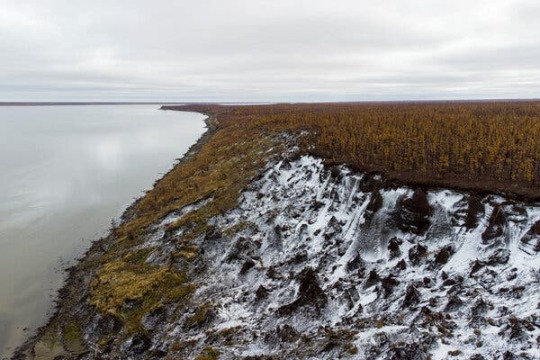
Melting permafrost near the Kolyma River southwest of the town of Chersky in the Russian Far East in 2021.Credit...Maxim Shemetov/Reuters
Another researcher in the study, Dr. Philipp Schiffer of the Institute for Zoology at the University of Cologne, said the more relevant application of the findings “is that in times of global warming we can learn a lot about adaptation to extreme environmental conditions from these organisms, informing conservation strategies and protecting ecosystems from collapsing.”
The Siberian permafrost has long offered the scientific community a window into the organisms of the distant past. Ancient viruses, mummified bodies and a suite of microscopic creatures have been resurrected from the ice over the years.
Amid the Covid pandemic, some have expressed concerns about unearthing ancient microorganisms, fearing that doing so could have deadly consequences for mankind.
Dr. Kurzchalia conceded that, theoretically, such a thing was possible, though he emphasized that the study of these organisms is conducted in sterile, lab-controlled settings.
A more prudent concern, in Dr. Kurzchalia’s view, is the threat of global warming significantly thawing the permafrost in Siberia. In that case, there would be no control over what is reintroduced to the world.
Though the ancient worms in the study died, that outcome was not unexpected given their life cycle, Dr. Kurzchalia said.
“Sleeping Beauty, when she came out, she didn’t live another 300 years,” he said.
1 note
·
View note
Text
By Orlando Mayorquin
At a time when the mighty woolly mammoth roamed the Earth, some 46,000 years ago, a minuscule pair of roundworms became encased in the Siberian permafrost.
Millennia later, the worms, thawed out of the ice, would wriggle again, and demonstrate to scientists that life could be paused — almost indefinitely.
The discovery, published this week in the peer-reviewed journal PLOS Genetics, offers new insight into how the worms, also known as nematodes, can survive in extreme conditions for extraordinarily long periods of time, in this case tens of thousands of years.
In 2018, Anastasia Shatilovich, a scientist from the Institute of Physicochemical and Biological Problems in Soil Science RAS in Russia, thawed two female worms from a fossilized burrow dug by gophers in the Arctic.
The worms, which were buried approximately 130 feet in the permafrost, were revived simply by putting them in water, according to a news release from the Max Planck Institute of Molecular Cell Biology and Genetics in Germany.
Called Panagrolaimus kolymaensis, after the Kolyma River in Russia, where they were found, the worms were sent to Germany for further study. The creatures, which have a life span measured in days, died after reproducing several generations in the lab, researchers said.
Using radiocarbon dating, researchers determined the specimens were frozen between 45,839 and 47,769 years ago, during the late Pleistocene.
The roughly millimeter-long worms were able to resist extreme low temperatures by entering a dormant state called cryptobiosis, a process researchers at the institute have been trying to understand.
No nematodes had been known to achieve such a dormant state for thousands of years at a time, Teymuras Kurzchalia, a professor emeritus at the institute who was involved in the study, said on Saturday.
“The major take-home message or summary of this discovery is that it is, in principle, possible to stop life for more or less an indefinite time and then restart it,” Dr. Kurzchalia said.
Researchers identified key genes in the nematode that allow it to achieve the cryptobiotic state. The same genes were found in a contemporary nematode called Caenorhabditis elegans, which can also achieve cryptobiosis.
“This led us, for instance, to understand that they cannot survive without a specific sugar called trehalose,” Dr. Kurzchalia said. “Without this sugar, they just die.”
While there are no clear practical applications for a deep understanding of cryptobiosis, that should not be a reason to stop the research, Dr. Kurzchalia said.
The discovery of semiconductors, or of the double helix structure of DNA, he said, took decades to yield a practical use, but ultimately turned out to be revolutionary.
“That’s the interest of science,” he said. “You end somewhere you didn’t presume.”
Cryptobiosis could, perhaps one day, be engineered by humans, he added.

Melting permafrost near the Kolyma River southwest of the town of Chersky in the Russian Far East in 2021.Credit...Maxim Shemetov/Reuters
Another researcher in the study, Dr. Philipp Schiffer of the Institute for Zoology at the University of Cologne, said the more relevant application of the findings “is that in times of global warming we can learn a lot about adaptation to extreme environmental conditions from these organisms, informing conservation strategies and protecting ecosystems from collapsing.”
The Siberian permafrost has long offered the scientific community a window into the organisms of the distant past. Ancient viruses, mummified bodies and a suite of microscopic creatures have been resurrected from the ice over the years.
Amid the Covid pandemic, some have expressed concerns about unearthing ancient microorganisms, fearing that doing so could have deadly consequences for mankind.
Dr. Kurzchalia conceded that, theoretically, such a thing was possible, though he emphasized that the study of these organisms is conducted in sterile, lab-controlled settings.
A more prudent concern, in Dr. Kurzchalia’s view, is the threat of global warming significantly thawing the permafrost in Siberia. In that case, there would be no control over what is reintroduced to the world.
Though the ancient worms in the study died, that outcome was not unexpected given their life cycle, Dr. Kurzchalia said.
“Sleeping Beauty, when she came out, she didn’t live another 300 years,” he said.
0 notes
Text
Fossil study sheds light on famous spirals found in nature
The findings indicate that the arrangement of leaves into distinctive spirals, that are common in nature today, were not common in the most ancient land plants that first populated the earth’s surface. Instead, the ancient plants were found to have another type of spiral. This negates a long held theory about the evolution of plant leaf spirals, indicating that they evolved down two separate evolutionary paths. Whether it is the vast swirl of a hurricane or the intricate spirals of the DNA double-helix, spirals are common in nature and most can be described by the famous mathematical series the Fibonacci sequence. Named after the Italian mathematician, Leonardo Fibonacci, this sequence forms the basis of many of nature’s most efficient and stunning patterns. Spirals are common in plants, with Fibonacci spirals making up over 90% of the spirals. Sunflower heads, pinecones, pineapples and succulent houseplants all include these distinctive spirals in their flower petals, leaves or seeds. Why Fibonacci spirals, also known as nature’s secret code, are so common in plants has perplexed scientists for centuries, but their evolutionary origin has been largely overlooked. Based on their widespread distribution it has long been assumed that Fibonacci spirals were an ancient feature that evolved in the earliest land plants and became highly conserved in plants. However, an international team led by the University of Edinburgh has overthrown this theory with the discovery of non-Fibonacci spirals in a 407-million-year old plant fossil. Using digital reconstruction techniques the researchers produced the first 3D models of leafy shoots in the fossil clubmoss Asteroxylon mackiei — a member of the earliest group of leafy plants. The exceptionally preserved fossil was found in the famous fossil site the Rhynie chert, a Scottish sedimentary deposit near the Aberdeenshire village of Rhynie. The site contains evidence of some of the planet’s earliest ecosystems — when land plants first evolved and gradually started to cover the earth’s rocky surface making it habitable. The findings revealed that leaves and reproductive structures in Asteroxylon mackiei, were most commonly arranged in non-Fibonacci spirals that are rare in plants today. This transforms scientists understanding of Fibonacci spirals in land plants. It indicates that non-Fibonacci spirals were common in ancient clubmosses and that the evolution of leaf spirals diverged into two separate paths. The leaves of ancient clubmosses had an entirely distinct evolutionary history to the other major groups of plants today such as ferns, conifers and flowering plants. The team created the 3D model of Asteroxylon mackiei, which has been extinct for over 400 million years, by working with digital artist Matt Humpage, using digital rendering and 3D printing. The research, published in the journal Science, was funded by UK Research and Innovation (UKRI), The Royal Society and the German Research Foundation. The study also involved researchers from, University College Cork, Ireland, University Münster, Germany and Northern Rogue Studios, UK. Dr Sandy Hetherington, an evolutionary palaeobiologist and the project’s lead at the University of Edinburgh, said: “Our model of Asteroxylon mackiei lets us examine leaf arrangement in 3D for the first time. The technology to 3D print a 407-million-year old plant fossils and hold it in your hand is really incredible. “Our findings give a new perspective on the evolution of Fibonacci spirals in plants.” Holly-Anne Turner, who worked on the project as an undergraduate student at the University of Edinburgh and is first author of the study, said: “The clubmoss Asteroxylon mackiei is one of the earliest examples of a plant with leaves in the fossil record. “Using these reconstructions we have been able to track individual spirals of leaves around the stems of these 407 million year old fossil plants. Our analysis of leaf arrangement in Asteroxylon shows that very early clubmosses developed non-Fibonacci spiral patterns.”
0 notes
Text

Got Deep Sleep the milotic ralts from our helix fossil! Glad to have this ancient specimen as part of our team!
1 note
·
View note
Photo

Inktober Catch up! Helix fossil for #day23 #ancient of #inktober2019 . . . #inktober #inktoberday23 #helix #lordhelix #omanyte #omastar #fossil #pokemon #pokemonfossil #ink #micron #pen #art #artist #blackandwhite #traditionalart https://www.instagram.com/p/B4Lcb86FmGI/?igshid=118molh4j2pkr
#day23#ancient#inktober2019#inktober#inktoberday23#helix#lordhelix#omanyte#omastar#fossil#pokemon#pokemonfossil#ink#micron#pen#art#artist#blackandwhite#traditionalart
1 note
·
View note
Photo
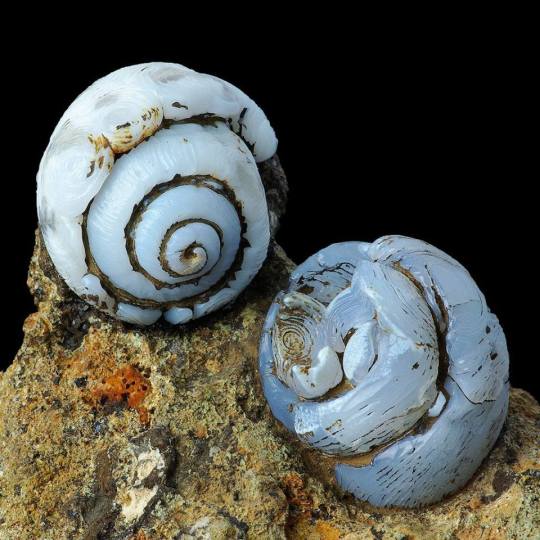
Helix Ramondi (land snail fossil) epigenised with Lussatite. Dallet, France. By Geologist2K12 on Facebook.
#snail#snails#helix ramondi#gastropod#gastropods#animal#animals#fossil#fossils#opal-ct#lussatite#mineral#minerals#epigenised#epigenized#dallet#france#ancient#facebook
66 notes
·
View notes
Text
Krenko’s Guide to Pokemon: Omanyte Line

PRAISE LORD HELIX!
DESIGN:
Omantye is basically just an Ammonite, which is a real extinct creature, except sized up and blue. Here’s the thing, though: Nobody knows what an Ammonite is. I don’t mean this in a scientific sense, but rather that while I’ll usually complain when a Pokemon is too close to a real animal, Ammonites are both weird enough and unknown enough that having an Ammonite Pokemon with minor differences is entirely okay. It’s an extinct fossil in our world, and it’s a fossil in their world. That’s sort of the point. Also, the big googly eyes and the multitude of tiny tentacles makes it a lot cuter than a real Ammonite.

Omastar is mostly the same thing, but with a few spikes. I don’t mind Omastar’s design in general, and honestly it looks good, but it’s a pretty minor jump from Omanyte, and I think more could’ve been done with it. Yes, it has that big beak, but it doesn’t look like it’s new, just that it’s reared back, and the spike line is pretty minor. I like the longer, thinner tentacles, but I also think they could’ve been exaggerated a bit more. As is, they don’t look useful, and Omantyte doesn’t learn any moves that could make use of them.

Art by PatrykGPL
TYPING:
Water/Rock is a pretty good type combination, with more resistances than weaknesses and a double-resistance to fire, albeit with a double-weakness to grass. Offensively, it has Super-Effective moves against six types, and no single type resists both Rock and Water.

Art by Fablefire
STATS:
With 125 Defense, Omastar is a physical tank, even with only 70 base HP. Its special defense is below average, but 115 Special Attack means it can dish out serious hits. Omastar is slow, but that’s to be expected both of Rock types and Pokemon with high defenses.

Art by Porcelain Parasite
ABILITIES:
I’ve spoken about Swift Swim at length before, and though Omastar’s base speed is only 55, Swift Swim can bring that up significantly in the rain, especially if your Omastar is built for speed. This allows Omastar to take full advantage of its high Special Attack without having to take as many hits.
If your team isn’t set for rain, Weak Armor also allows Omastar to gain speed, at the expense of Defense, whenever it takes a physical attack. This is a real trade-off, but it’s not a bad one with the right build.
Omastar’s only defensive ability is Shell Armor, which grants it immunity to critical hits. When you’re relying on something’s defense, that’s just a decent ability to have. It’s not flashy, but it comes up and can absolutely save you.

Praise Helix by Eternal Saturn
MOVES:
Omastar has a full lineup of water moves, with Surf or Hydro Pump for the more offensive builds and Scald for the more defensive ones.
The problem is that Omastar’s rock moves are uhh… bad. Rock just doesn’t have many special attacks, so while Omastar gets Ancient Power, its STAB only brings it to 90 Power, making it no better than Omastar’s off-type options of Ice Beam and Earth Power. Meteor Beam is also an option, but as a two-turn attack it’s generally just not worth it, so I wouldn’t recommend using it without a Power Herb.
Outside of raw attacks, though, Omastar has plenty of options. Shell Smash is one of the better buffs in the game, trading one stage of each Defense for Two stages of each Attack, and Speed, instantly setting up Omastar to start sweeping.
Spikes, Toxic Spikes, and Stealth Rock are all available to Omastar, allowing it to set up while being defensive. Protect also helps a defensive build when using Scald, as it triggers a turn of Burn on the opponent and potentially a turn of Leftovers on Omastar.

Art by Fettergeist
OVERALL:
Omastar is entirely decent, with passable stats and viable strategic options. It doesn’t do anything particularly unique, but it has solid coverage, decent stats, and a type combination that comes out in its favor. Also, Shell Smash is just a great move. My only real complaint about Omanyte is that it’s a Rock type Special Attacker, and it can’t get Power Gem, so it has a hard time leveraging the Rock type offensively.
Also, what’s up with all its Pokedex entries talking about how powerful an Omastar’s bite is when it’s obviously a special attacker, not a physical one?

Anarchy by Turtle-Ants, which I have to assume is an Avatar creature
19 notes
·
View notes
Photo

iSubconsciously Engineer Ancient [iSEA] CHTHONIC Human PHANTASMS of SIRIUS UNSEEN NANO [SUN] BIOTECHNOLOGICAL MEMORY Intel [MI = MICHAEL] MELANIN… from My PREEXISTENT Dematerialized REPTILIAN [URAEUS] Human Fossil Records of Ancient [RA] Crystallographic Data Scientifically Explaining & Exploring [SEE] Ancient FUTURISTIC Human DNA of SIRIUS Subatomic Eukaryotic Endomembrane [SEE] Systems Interconnected by Asymmetrical DNA [A.D.] Helix Strands of Double Genetic Enzyme MARKERS [GEM = GEMINI] Replicating Nucleic Acid [RNA] Monomers of 144,000 NANOSCOPIC Identities Biochemically Introducing Ribosomes with UNICELLULAR [NIBIRU] ORGANISMS of Catalyzed Reactions from OTHERWORLDLY REALITIES Simultaneously Interacting with My PREEXISTENT Human DNA [PhD] SPIRIT of Multidimensional IDENTITIES [MI = MICHAELS]… who Immaculately MATERIALIZED from My Primordially ANCIENT [PA = SUPERNATURAL] MULTICELLULAR Eukaryote [ME = U.S. Michael Harrell = TUT = JAH] Biology of Latent PREBIOTIC Carbon [PC] Human SUN CELLS of CRYSTALIZED NANOPARTICLES that Naturally Contain WELL DEFINED Ancient Genomic DNA Protein Codes [PC] FOLDING + UNFOLDING [EVOLVING] My Immortal DEATH [I.D.] MEMORY Intel [MI = MICHAEL] MELANIN of Ancient POLYPEPTIDES [MAP] Alkhemically + Genetically Engineering [MAGE] My Highly Complex [ADVANCED] Ancient Conformational Human DNA/RNA SPIRIT Energies of Encrypted DEATH [SEED] DATA… Legally Registered Privately @ My Highly Official… U.S. Ancient [USA = PREHISTORIC] Ægyptian American [ATLANTEAN] SPIRIT ENERGY TECHNOCRACY [SET] of SIRIUS Ancient FUTURISTIC 6G QUANTUM HARRELL TECH SPIRITS [CHTHONIC ENERGY WARRIORS] in $unny California [CA] https://www.instagram.com/p/CPUJ1UzhGIj/?utm_medium=tumblr
#quantumharrelltech#Remember Our Spiritual War in Heaven???#THE SPIRIT WORLD CANCELLED MODERN DAY HUMANITY IN 2021 [V]
2 notes
·
View notes
Photo


#138.5 - Omanyte are prehistoric and long-extinct Pokemon that were genetically resurrected from ancient Helix Fossils. They are sea-dwelling Pokemon that lived in the primordial sea; by storing air in their shell to sink and rise, and adeptly twisting their 10 tentacles, they were able to navigate the ocean with ease. When young, revived Omanyte will meekly eat plankton and are quick to hide within their shell when threatened. As they age, they become bolder and more vicious, ensnaring prey with their tentacles and using their sharp fangs to suck out the insides.
Named: Omanyte - Omalix - Omastar
- - - - - - - - - -
Follow for more In-Progress Pokemon evolutions!
FAQ | Social Media | Pokemon Index | Commission Information
#pokemon#fakemon#in progress pokemon#omanyte#omastar#gen1#kanto#water type#rock type#fossil pokemon#lord helix#omalix#named
907 notes
·
View notes
Photo

Today Zigzagoon found an ancient helix fossil.
17 notes
·
View notes